15 - 16 MARCH 1998 - 09.00 - 12.00 UTC - FRONTAL DIAGNOSIS - USE OF VERTICAL CROSS SECTIONS
by ZAMG
|
15 March 1998/12.00 UTC - Meteosat IR image; position of vertical cross section indicated
|
15 March 1998/12.00 UTC - Vertical cross section; black: isentropes (ThetaE), orange thin: IR pixel values, orange thick: WV pixel values
|
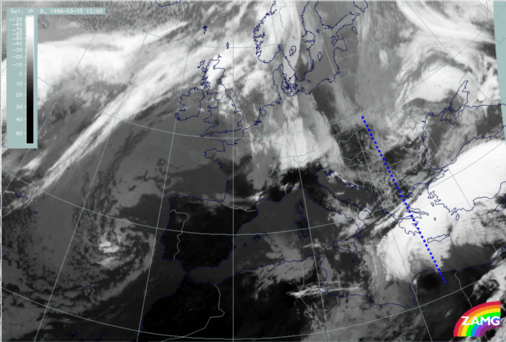
|
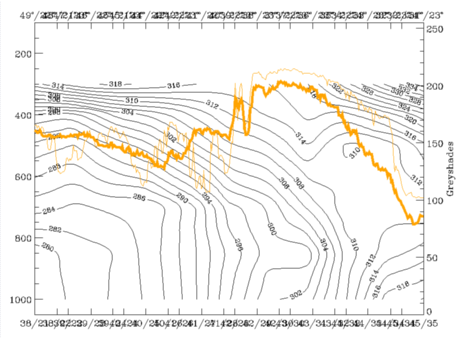
|
15 March 1998/12.00 UTC - Vertical cross section; black: isentropes (ThetaE), red thin: temperature advection - CA, red thick: temperature advection - WA,
orange thin: IR pixel values, orange thick: WV pixel values
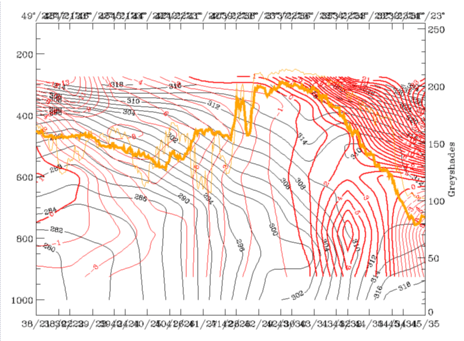
|
15 March 1998/12.00 UTC - Vertical cross section; black: isentropes (ThetaE), magenta thin: divergence, magenta thick: convergence, orange thin:
IR pixel values, orange thick: WV pixel values
|
15 March 1998/12.00 UTC - Vertical cross section; black: isentropes (ThetaE), cyan thick: vertical motion (omega) - upward motion, cyan thin:
vertical motion (omega) - downward motion, orange thin: IR pixel values, orange thick: WV pixel values
|
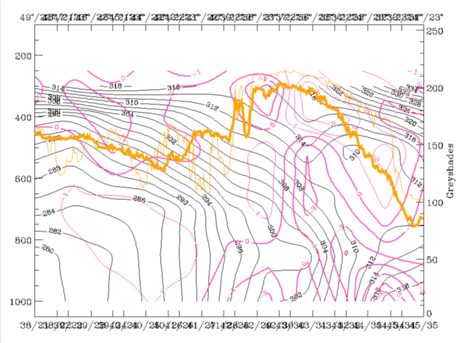
|
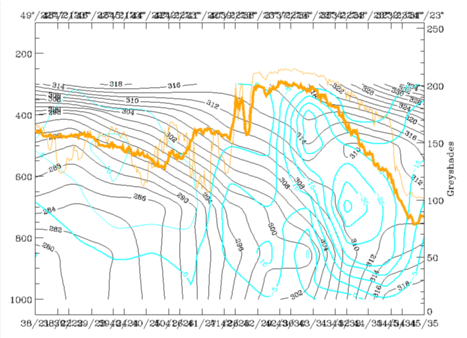
|


